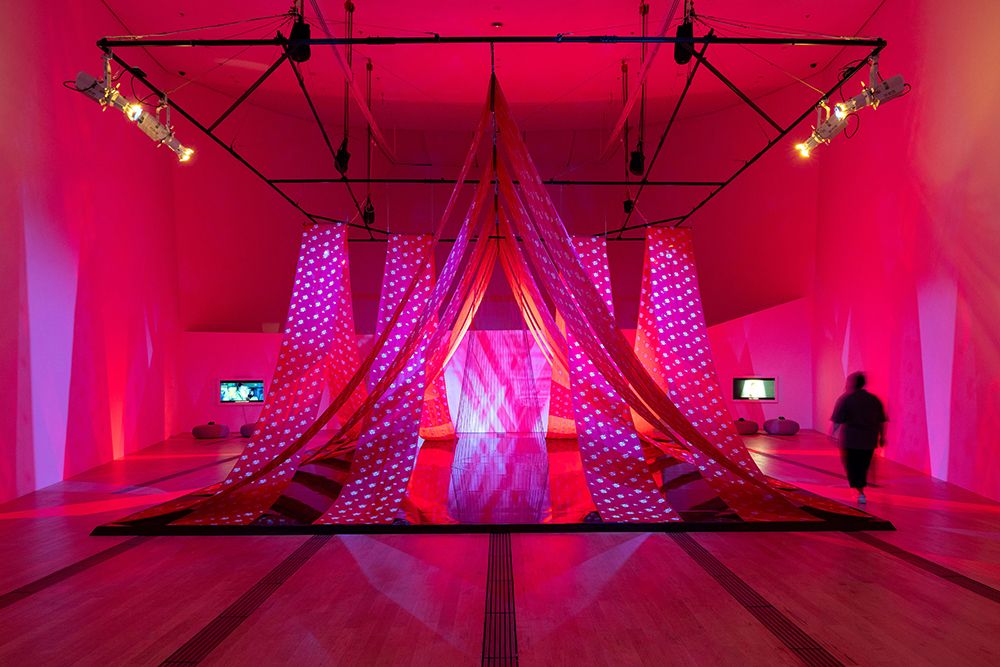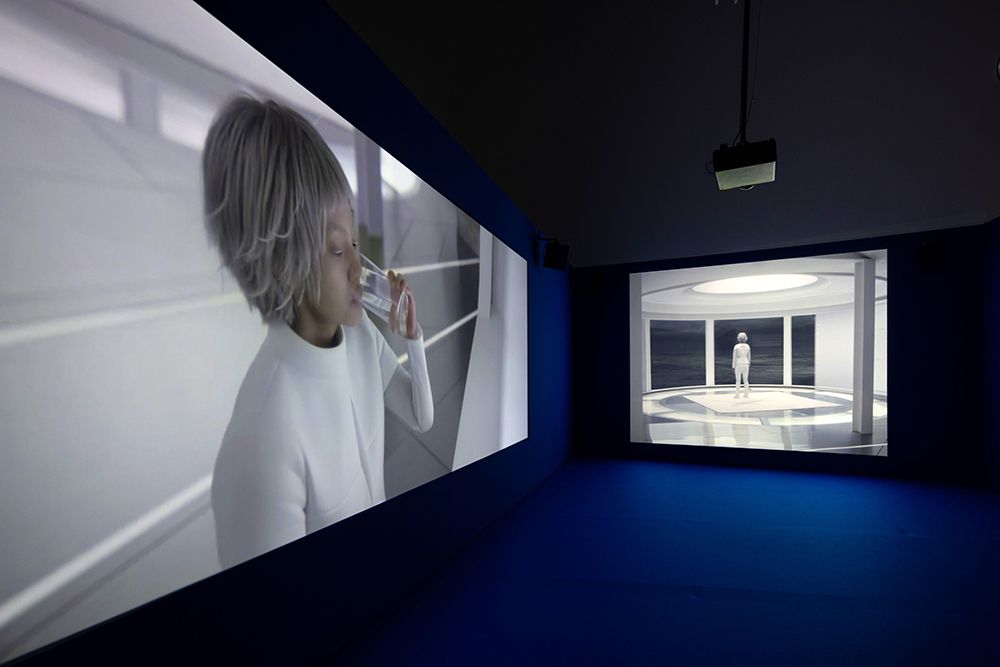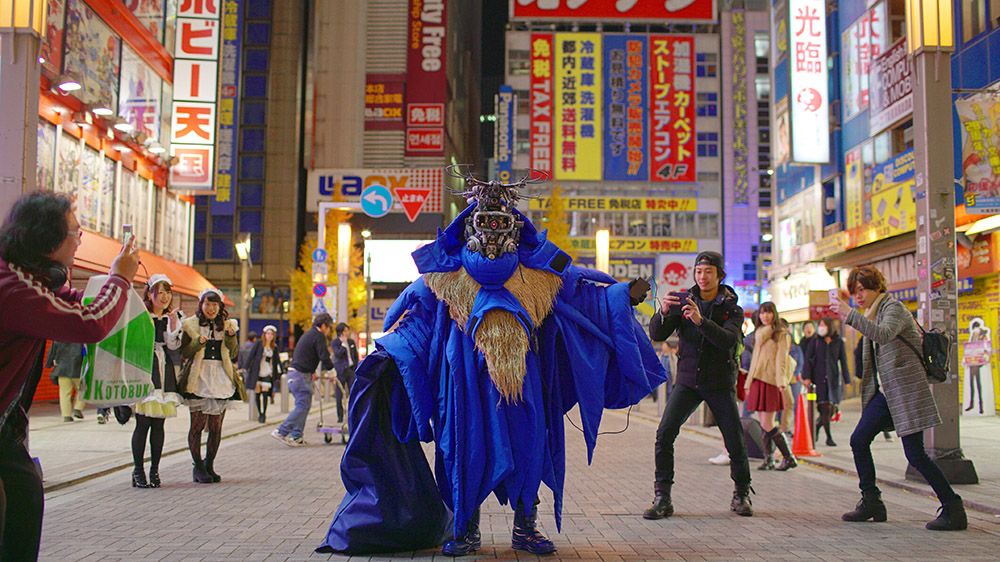![[object Object]](https://admin.thus.ph/uploads/thusscifi01_66056399d0.jpg)
“SCI-FI: Mythologies Transformed" by Women
The exhibit renders the usually Western, male-dominated genre of science fiction through the work of women from Asia and Australia.

2024-07-23T08:18:11.963Z
When Khan shared her sentiment, she did so in an attempt to criticize the push to make the popular space saga more inclusive. And, since she said it, women have been up in arms—bearing lightsabers no less. According to a report by NBC News, the audio of Khan’s claim has been used as a backdrop for around 1300 videos of women showing their affinity for Star Wars. Some were seen at conventions and screenings while many were seen cosplaying as characters from the franchise. Ironically, her statement has become a vehicle to challenge the kind of dismissiveness and sexism women are often confronted with in the Star Wars fandom.
But Khan’s opinion is one take related to one franchise in one massive genre. And in the massive galaxy of science fiction, there are other worlds appreciated by women—even if they are frequently dismissed, unseen or misrepresented in it.
A testament to this is “SCI-FI: Mythologies Transformed,” an exhibit which views the vastly male-dominated subject through the lens of women artists and women-inclusive collectives. Originally curated by the ArtScience Museum of Singapore’s Marina Bay Sands, this show will be travelling over 4000 kilometers to the Science Gallery at the University of Melbourne and open on August 3, 2024.

Red Silk of Fate - The Shrine (2023) by Sputniko! and Napp Studio
Previously titled New Eden: Science Fiction Mythologies Transformed, the exhibit was curated by Gail Chin, Joel Chin, Adrian George and Honor Harger the Vice-President of ArtScience Museum. It featured 70 contemporary artworks, historical artefacts, and films which looked into the connections between science fiction and Asian philosophy and mythology. This resulted in an exhibit that involved structures dazzling onlookers with elaborate lights, fantastical figures fusing womanhood, technology and the supernatural, speculations of the “paradise” we aim to find through technology, and spaces that use the worldly to take visitors to the otherworldly.
For its new iteration, which will be co-produced by Science Gallery, the exhibit—aside from getting a new name—will be expanded in scope to include the works of artists from Australia.
“Touring ArtScience Museum's in-house curated exhibitions has always been a dream,” said Harger. “So, we are thrilled to be working with Science Gallery Melbourne on the presentation of our first travelling exhibition this August. SCI-FI: Mythologies Transformed uses science fiction as a starting point to explore diverse worlds and inclusive futures envisaged by some of the most prominent artists working today.”
According to Harger, science fiction is rarely approached from the perspective of the Asia Pacific region and through the work of women. Both ArtScience Museum and Science Gallery wishes to change that and challenge the narrative that this genre is a solely Western and male-dominated subject. They aimed to do so by focusing on the connections between Asia Pacific and the West. Both establishments also wanted to give a platform for alternative voices.
With these specifications coming into play, the resulting show became a far-reaching exploration of elements that make science fiction compelling: the pursuit of paradise through technology, the unknown that hides in the vastness of space and possibilities, and the tenacity to confront it. By doing so, however, it also looked at its shortcomings: from the tendency of this genre to box women into one-dimensional roles and the misrepresentation of non-Western cultures.
“We have drawn synchronicities between speculative ideas in science fiction, such as parallel universes, interdimensional travel, and transcendence, and ontological concepts embedded in Asian spiritual frameworks such as Buddhism, Taoism and Shintoism, alongside cultural belief systems from Australia and the Pacific,” Harger said. “The show we have made together moves between ancient mythology, contemporary art, literature and post-modern cinema, suggesting that some science fiction tropes may have their origins in Asia."

The Ways of Folding Space and Flying (2015) by Moon and Jeon
For the new iteration of the show, Science Gallery’s curators, Bern Hall and Tilly Boleyn, also added their own ideas into the mix. Because of this, it will now weave together narratives found in the Western literary and cinematic genre of science fiction and ideas inherent in Asian and Pacific spiritual traditions that have evolved over millennia.
Aside from the artworks displayed in the first showing in Singapore, this new version of the show will also feature a range of works by Asian-Australian artists and First Nations artists. Among the works include Mok Mok Murrup Yakuwa by Paola Balla; it is an immersive film installation referencing the Wemba Wemba story of Mok Mok—a devil woman and sovereign goddess. Also included is GUÀI by Mindy Meng Wang and Monica Lim; this uses artificial intelligence and augmented reality to transform the appearance of viewers into beings from Chinese mythology.
Such works will support the vast world already created by previous displays. That includes Miko No Inori by Mariko Mori, a seminal video wherein Mori invites the viewer to traverse between realms, and Patty Chang’s Mountain (Shangri-La) which dazzles viewers in the form of a three-dimensional artwork that rotates like a prayer wheel to reflect light and emit ‘energy’ into the surrounding space.
The new version of the show will also include one of the highlights of the Singapore exhibit: the Red Silk of Fate – The Shrine, a dramatic installation based off of the Chinese myth which states that people who are destined for each other are connected by an invisible red thread. Created by award-winning Japanese artist, Sputniko! and Napp Studios. “The Shrine” is composed of red threads that contain oxytocin, a love hormone.
To complete the exhibit, other artists and collectives will also be involved. These include Morehshin Allahyari, Lynda Barry, Cao Fei, Kara Chin, Chok Si Xuan, Club Ate, Claire G. Coleman, Debbie Ding, Fei Yi Ning, Etsuko Ichihara, Corin Ileto, Shilpa Gupta, Tristan Jalleh, Joy Li, Moon and Jeon, Xin Liu, Nguyen Trinh Thi, The House of Natural Fiber, Jen Rae, Astria Suparak and Saya Woolfalk. Their works will be combined to fashion a portal that will allow visitors to encounter fantastical worlds.
“SCI-FI: Mythologies Transformed presents a series of works by predominantly women artists and collectives from across the Asia Pacific whose practices are inspired by the region’s history and culture,” said Dr. Ryan Jefferies, Director of Science Gallery. "We are delighted to be collaborating with ArtScience Museum on this important exhibition, bringing fresh perspectives on science fiction to Melbourne for the first time.”

Namahage in Tokyo (2017) by Etsuko Ichihara
ArtScience Museum opened its doors in 2011. It was the first museum in Asia that was dedicated to exploring the intersection of art, science, and technology. Since its inception, the museum has regaled its guests with an ever-changing slate of programs and collaborations designed for it to claim the position of a cultural leader, a producer of shows that reflect trends in both science, technology and the arts.
“SCI-FI” is the second collaboration it pursued with Science Gallery. Both institutions previously worked on MENTAL which showcased both Australian and Southeast Asian art-science collaborations that looked into new approaches to mental health and wellbeing.
This is in line with the goals of Science Gallery which aims to—according to its website—"involve, inspire and transform curious minds through arts and science.”
Fittingly, this too can be the role of sci-fi. It can—and it has—used the combined forces of arts, science and technology to influence generations of people regardless of their gender. Star Wars, with its fandom of millions across that world, is an example of sci-fi that has done that—even though there are those who are rigid enough to presume that women do not watch or care about it.
Recommended

Why Labor Agitation Resumes Operation
Allen Gumiran

The Work of Comedy In The Age of Soyjaks and Tiktok Vids
Allen Gumiran

Thank You, Ma. You Did Everything But I Realized You Needed Help
Corin B. Arenas

Paracelis Goes to Baguio
Quintin Pastrana

Some Truths That Will Set Filipinos Free
Allen Gumiran

The Road Warrior
Edmark Tan

“SCI-FI: Mythologies Transformed" by Women
Thus

How Powerful is the President Really?
Allen Gumiran
